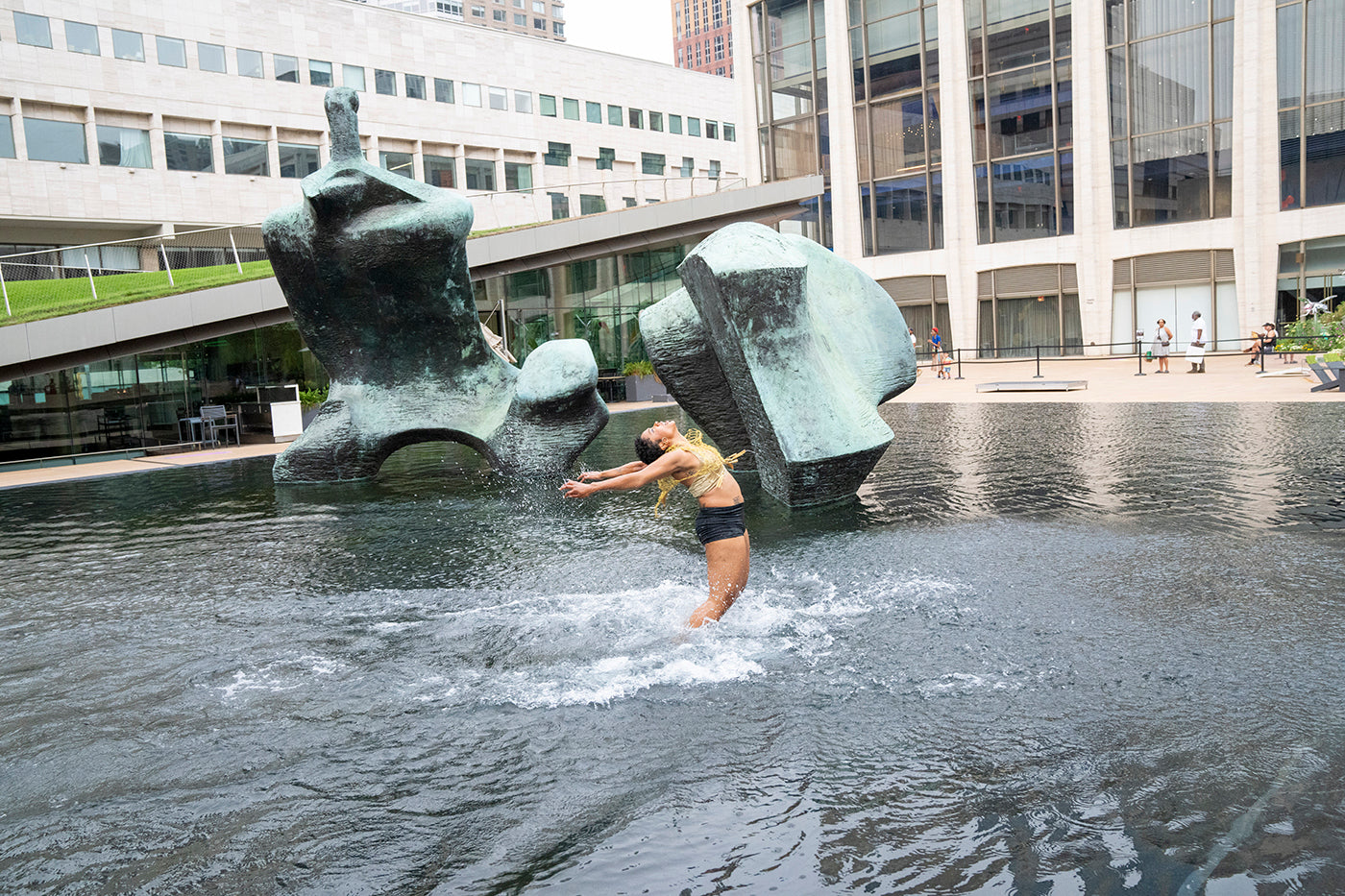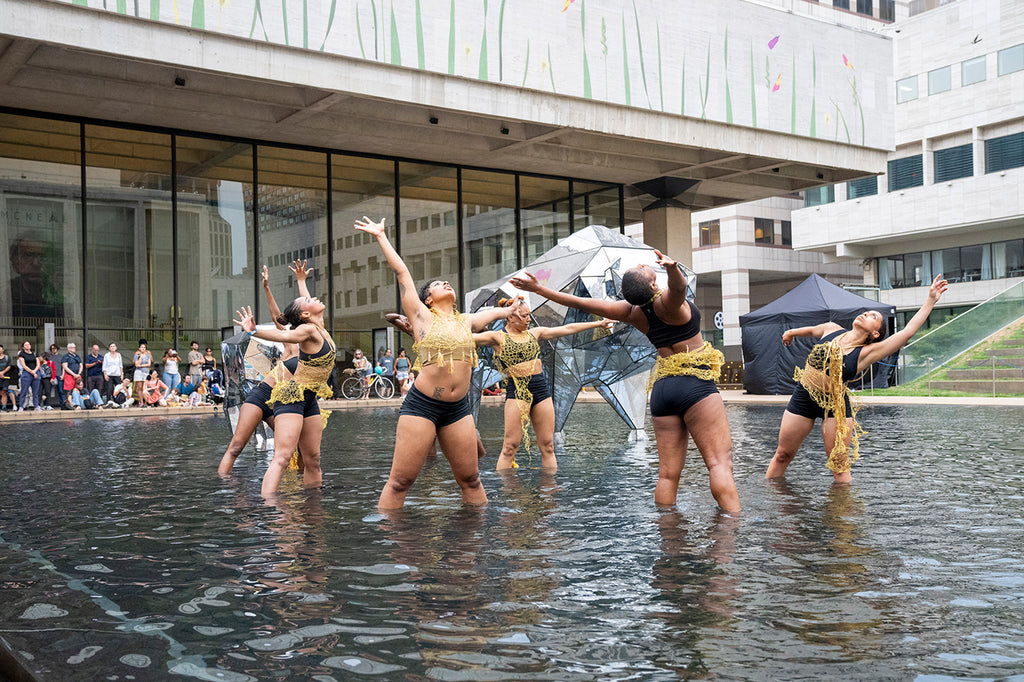Haint blu is a blue-green color painted on porches of southern communities to ward off bad spirits. It’s also the title for the newest work from Urban Bush Women, the Black women-led dance theater company celebrating its 40th anniversary in a week long residency at New York’s Lincoln Center for the Performing Arts. “Haint Blu/Episodic Chapters” is my first look at the company since its MacArthur Award winning founder, Jawole Willa Jo Zollar, stepped aside and named longtime company members Chanon Judson & Mame Diarra Speis as her artistic successors. “Haint Blu” is their creation, made in collaboration with company members, Courtney J. Cook, Kentoria Earle, Roobi Gaskins, Keola Jones Symara Sarai, and Mikaila Ware.
As nearly a dozen performers lead a “migratory/participatory journey” through several locations on the plaza, the audience follows. Dressed in plaid, khaki, and denim, each performer has a story to tell in words, music, and dance. The movement is fierce and athletic. Beginning in the grove, they weave through trees, race in place while wildly waving their arms, lunge and squat, kicking up dust with their matching blue athletic shoes. My favorite location is the stage near the New York Public Library for the Performing Arts, where the dancers have the space and proper flooring to really go for it. Notable solos here include Courtney J. Cook, riffing off the old Verizon phone ad as her lines, “Hello! Can you hear me, now?” grow increasingly urgent; and Roobi Gaskins, moving with fluid feline stealth in a capoeira laced spotlight. “We have arrived at the house,” narrates Kalambay from beneath a black Panama hat, “that activates the underwater railroad of all time.”










comments